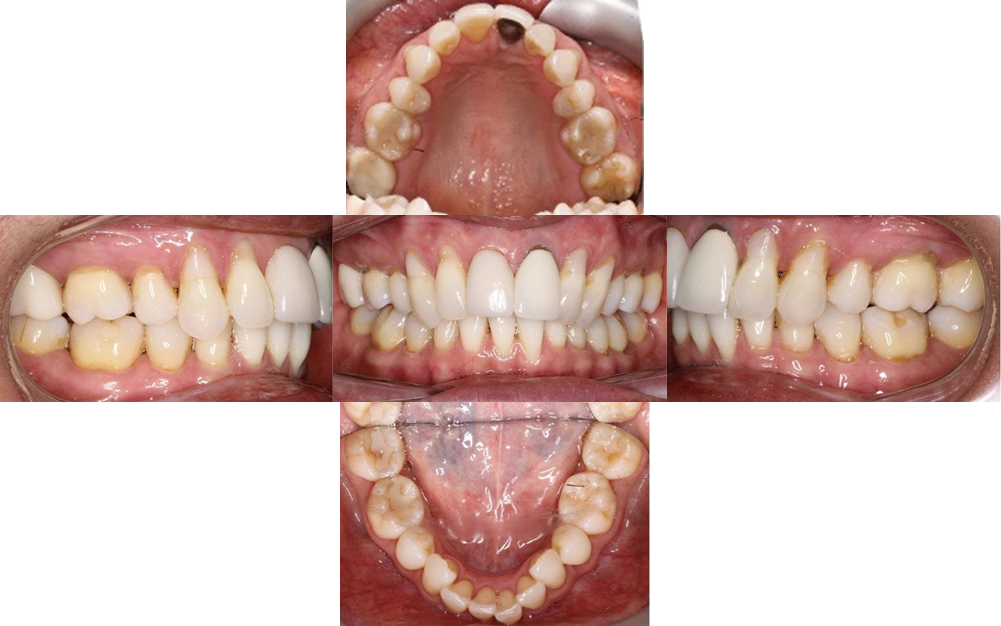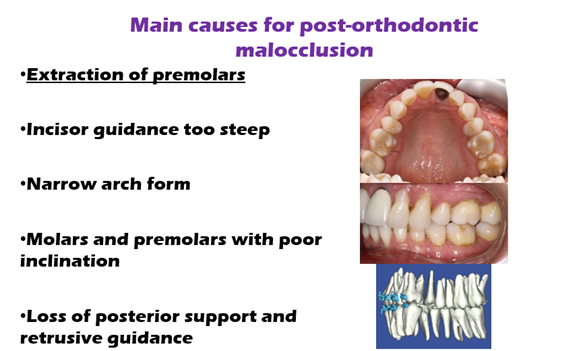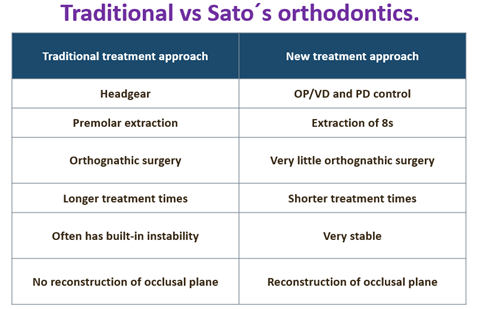What is Sato´s Orthodontics?
Sato´s Orthodontics is a field of research and treatment that focuses on the position and movement of the mandible about the skull. It considers the evolutionary background of the craniomandibular system (CMS) and aims to improve the function of the CMS through occlusal treatment.
The vertical occlusal height (VD) and the occlusal plane are critical in the CMS and maxillofacial complex’s growth, development, and functional role. They play a decisive role in developing and treating malocclusion and temporomandibular joint dysfunction (TMD).
The True Role of Orthodontic Treatment
Orthodontic treatment is a powerful and effective way to correct occlusal problems. By moving natural teeth, it induces an adaptive response in the body. Malocclusions, or misaligned teeth, often occur due to a lack of support during occlusion caused by the inclination of lateral teeth. Additionally, malocclusions can result from abnormalities in the occlusal plane depending on the type of malocclusion. Furthermore, some cases require controlling the occlusal vertical height and occlusal plane to induce mandibular readaptation, such as mandibular prognathism with excessive anterior mandibular adaptation and mandibular retrusion where the mandible fails to adapt anteriorly during growth.
Orthodontic treatment can be tricky, making prosthetic or restorative occlusal treatment insufficient to improve the occlusal plane and guide the treatment of the mandibular position. Therefore, there is a need for treatment methods that maximize the benefits of orthodontic treatment. But, after undergoing traditional orthodontic treatment, some patients may develop a type of malocclusion called post-orthodontic malocclusion.
What is a Post-Orthodontic Malocclusion?
A malocclusion that develops after previous traditional orthodontic treatment can cause severe problems if not addressed during treatment or if introduced—fig 1.

Figure 1. Typical example of post-orthodontic malocclusion
Leading causes for Post-Orthodontic Malocclusion
1. Regarding early treatment
No concepts are utilized when applying early intervention with functional and removable palatal expansion devices. Based on the principle that the craniofacial complex is highly adaptable, we use biological principles within the masticatory system to encourage the adaptation we want to take place.
2. Regarding extraction treatment
There are two types of treatments involving the extraction of premolars – upper/lower premolar extraction and unilateral premolar extraction. In many cases, missing occlusal support is observed, leading to problems of posterior discrepancy after the extraction. Other issues that may arise include an Incisor guidance that is too steep, narrow arch form, poor inclination of molars and premolars, loss of posterior support, and retrusive guidance.
3. Regarding the Craniomandibular System (CMS) function
There is a lack of consideration for the proper functioning of the cranio-mandibular system. Many cases have shown excessively steep front guidance following premolar extraction treatment.
4. Regarding occlusal support and guidance
In many cases of post-orthodontic malocclusions, the buccal segments were not positioned correctly (uprighted), resulting in disharmony between occlusal and posterior guidances (eminence).
5. Regarding diagnosis and treatment planning
It’s not uncommon for cases of post-orthodontic malocclusion to be treated without proper diagnosis and treatment planning. This is usually because there is a lack of understanding about how the malocclusion developed, including occlusal plane inclination, vertical dimension, and posterior discrepancy. These factors are often overlooked, even though they can be the underlying cause of the malocclusion.

Fig. 2 Common findings in premolar extraction treatment include steep incisor guidance, narrow arch form, and poor inclination of molars and premolars, leading to loss of posterior support and retrusive guidance.
Table. 1. Main Differences Between Traditional Orthodontics and Sato’s Orthodontics
Proposals to Prevent Post-Orthodontic Malocclusion
To avoid the occurrence of post-orthodontic malocclusion, the following measures are recommended:
- Proper exam and diagnosis of the root cause of the malocclusion
- Remove 8s to resolve the posterior discrepancy
- Establish the proper vertical dimension
- Reconstruct the occlusal plane
- Create canine-dominated sequential guidance
To learn more about Sato Orthodontics.. click below on the course title
Roberto Velasquez, D.D.M, M.Sc., Ph.D., Miles Guyton, D.D.S., Heike Kraemer, Dr. med. dent., M.Sc.
2024-2026: Starts March, 13 – 16 & May 15 – 18, June 19 – 22, September 11 – 14, December 4 – 7
Continues every Mar/Jun/Sep/Dec; 2025-26 TBD



